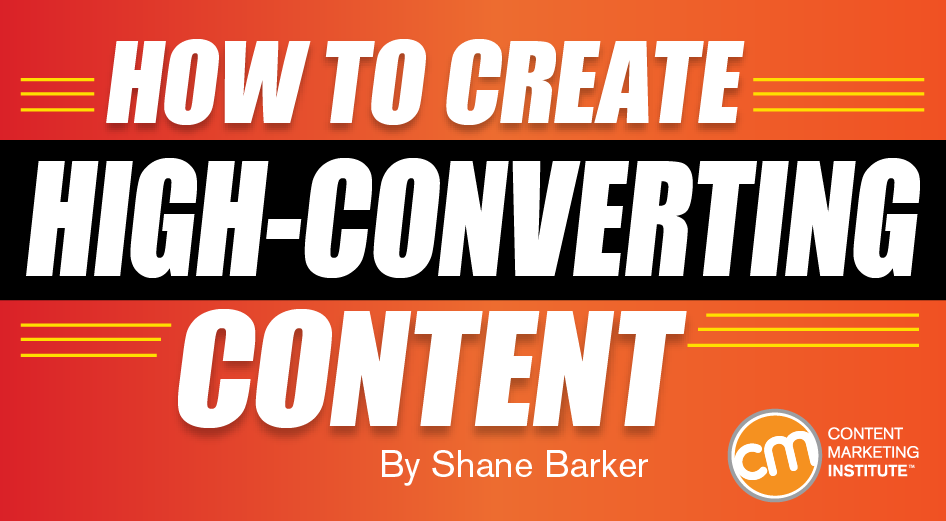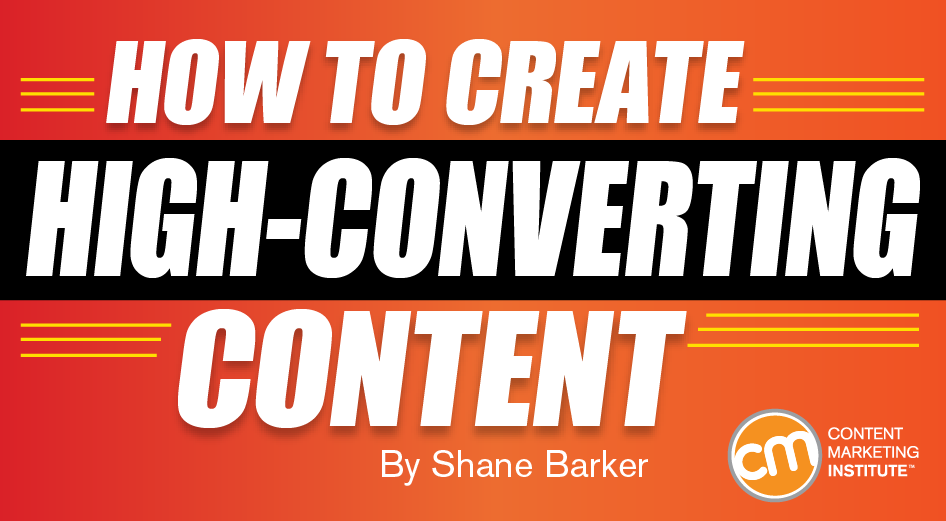Author: Shane Barker / Source: Content Marketing Institute As a content marketer, your job is to use content to sell something – whether

As a content marketer, your job is to use content to sell something – whether it’s a product, service, or message. Maybe you’re already driving sufficient conversions. But do you really want to settle for sufficient?
There are many ways to improve your content marketing, and double or even triple your conversion rates. Today, let’s focus on the most important aspect of content marketing – your content. Here are five ways to create high-converting content to boost your conversions.
1. Write a killer headline
Your headline is the first thing readers notice about your blog post or landing page content. Whether or not the headline captivates them will likely determine if they continue reading the content, or bounce.
Although different variations of headlines work, there are some common elements in successful headlines. HubSpot and Outbrain conducted a study of 150,000 article headlines and discovered:
- Headlines with eight words performed the best in click-through rates.
- Headlines containing a colon or a hyphen performed 9% better than those without.
- Odd numbers in list posts have a click-through rate 20% higher than even-number lists.
- Ending a headline with a question mark results in a higher click-through rate than using an exclamation point or a full stop.
You can use these common characteristics of successful headlines as the foundation for writing killer headlines that convert. Clearly explain what the content is about in a few words, and if it needs a little bit more detail, include a short explainer after a colon or hyphen. And when creating a list post, keep it to an odd number.
In addition to these basics, try to use words and phrases that are more likely to convert. According to WiderFunnel, words like “you,” “because,” “free,” “new,” and “instantly” help drive conversions. You can find more high-converting words in a list of 700-plus power words compiled by OptinMonster.
It can also be helpful to come up with several potential headlines. Then use an analyzer tool like the ones from CoSchedule or Advanced Marketing Institute to see how well each headline would perform.
Example: The original headline for this post – How to Create High-Converting Content – received an emotional marketing value (EMV) score of 60% from the Advanced Marketing Institute tool. That EMV is about double the average EMV score for most professional copywriters’ headlines.

Once you analyze your list of potential headlines, use the one with the highest score(s) to drive more conversions.
2. Intrigue readers with your intro
Your headline should attract readers, and your intro should intrigue them enough to make them stay. It should make them want to read more. In other words, your headline is the bait, and your intro is the hook.
For blog posts, the first three to four sentences are the intro. It needs to be to the point and should clearly explain how readers can benefit from the post. Otherwise, why should they keep reading?
In the case of landing pages, the subhead acts as the intro and is equally important for intriguing and converting your audience. The subhead should highlight the main benefits, preferably with bullet points so the information is easier to scan and process.
Example: You can find an excellent example of an effective intro on the Consulting page of Content Marketing Institute. As you can see in the screenshot below, the first two sentences talk about CMI’s mission and focus in regards to its consulting service. Those statements lead into a third sentence, which highlights the “biggest benefit” of the service.

3. Don’t forget to add visuals
Adding visual elements to your text content can make a huge difference in performance. It attracts and engages your readers, while adding more substance to your content. It also is an excellent way to break up longer pieces of text, making your content easier to scan and understand.
A study conducted by Chute and Digiday noted that 20.3% of marketers found visual content to be three times more effective than text content. And another 19.5% found it to be four times more effective.

What makes the best kinds of visuals largely depends on the type of content you’re creating. Here are five types of visual content that can help you increase…

COMMENTS